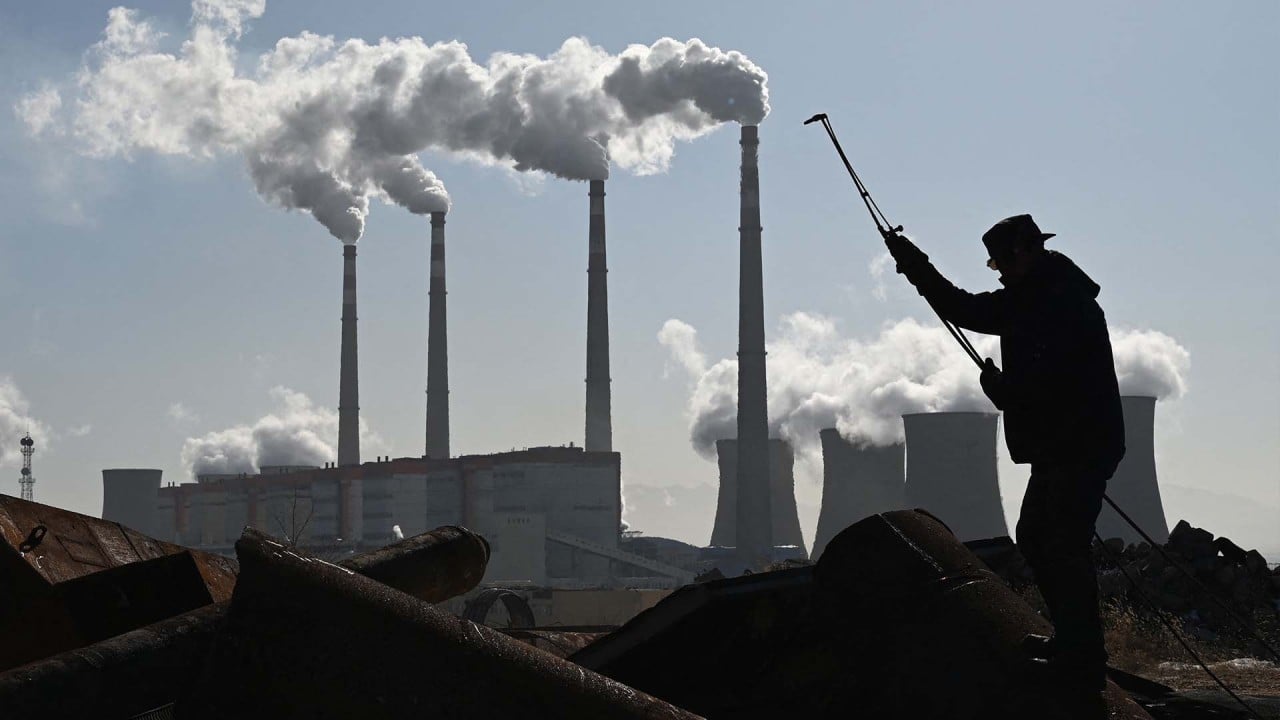
China’s hydrogen energy industry accelerates as country races towards carbon neutral goal
- Cities across China have released ambitious hydrogen energy blueprints recently and investment in the sector is growing
- Authorities’ tolerance for trial and error and China’s huge market potential are key factors in its rapid development
Authorities’ tolerance for trial and error and China’s huge market potential are key factors in its world-leading hydrogen energy development, according to observers.
In 2016, key components and materials for hydrogen fuel cell electric cars in China relied on imports, and most domestic products were only in the R&D stage, according to Li Wei, vice general manager of the China Automotive Technology & Research Centre.
But the industry has advanced significantly since then, establishing a hydrogen energy industry chain, strengthening production of core components and materials for fuel cells, and scaling production to lower costs, said Li, who was speaking at the UNDP Hydrogen Industry Conference 2021 in Foshan last week.
What is green hydrogen and can it help China meet its carbon goals?
“The price of hydrogen has dropped from 80 yuan per kilogram to 40 yuan and is expected to be within 25 yuan in the long run,” he said.
Under the Accelerating the Development and Commercialization of Fuel Cell Vehicles in China programme, seven Chinese cities have invested US$365 million over the past five years, far exceeding the initial budget of US$61.73 million, said Li.
When used as fuel, hydrogen produces no direct emissions of greenhouse gases or pollutants. As a result, it has enormous potential as a source of green energy and is a key element in China’s drive towards carbon neutrality.
Green hydrogen is generated entirely by renewable energy such as wind and solar power, and has much lower carbon emissions than grey hydrogen, which is produced using fossil fuels.
Gan Yong, a researcher and former vice-president at the Chinese Academy of Engineering, said it was inevitable hydrogen energy would be part of China’s power mix.
“Wind power and photovoltaic power generation are large but fluctuating, which makes energy storage the focus of future development,” he said at the same conference. “But hydrogen energy development is critical because it can resist volatility and randomness.”
China needs breakthroughs in hydrogen to catch up with Japan: experts
China’s combined wind and photovoltaic power capacity is expected to reach 1.62 billion kilowatts by 2030 and 4.8 billion kilowatts by 2060, accounting for about 50 per cent of overall power generation in 40 years, according to Gan.
In comparison, total power capacity in the United States – including coal, gas, and renewable energy – is currently around 1.2 billion kilowatts, according to the National Energy Administration.
US ban on Xinjiang solar products heaps pressure on supply chains
Several cities across China have released ambitious hydrogen energy blueprints recently. The southern city of Yueyang said the output of hydrogen energy and related industries is expected to be worth 50 billion yuan (US$7.8 billion) by 2025 and surge to 200 billion yuan by 2035.
Shanghai expects to have 10,000 hydrogen-powered cars on its roads in 2023, and the value of the city’s hydrogen car industry will hit 100 billion yuan by 2023.
Foshan, which has a hydrogen energy industry cluster with more than 300 related enterprises, estimates the value of its hydrogen energy industry will reach 100 billion yuan by 2030 and 150 billion yuan by 2035.
The local government will provide subsidies for up to 8 million yuan for each new hydrogen-powered refuelling station. The city in Guangdong so far has 25 hydrogen-powered refuelling stations, and more than 1,000 buses and a tram running on the fuel.
Gan said China should focus on developing hydrogen-powered heavy-duty trucks.
“It is impossible to use lithium-powered cells for heavy trucks above 49 tonne, so hydrogen fuel cells are the best alternative, and logistics-intensive ports across China are especially suitable for establishing diesel-to-hydrogen demonstration areas,” Gan said.
Last September, five government agencies and ministries, including the Ministry of Finance, the Ministry of Industry and Information Technology and the powerful National Development and Reform Commission, jointly announced hydrogen-powered heavy-duty trucks could receive up to 546,000 yuan in subsidies.
China is not the only country to invest heavily in hydrogen. Given its potential to lower emissions, policies and projects for hydrogen energy have expanded rapidly around the world.
Due to recent spikes in fossil fuel prices across Europe, green hydrogen has for the first time been cheaper to produce than grey hydrogen, adding to calls to speed up development of the industry.
Hydrogen has been “gathering strong momentum as a key energy transition pillar”, according to a report by McKinsey & Company and the Hydrogen Council released earlier this year.
The report said the European Union was leading the world in hydrogen development, with more than half of the world’s large-scale industrial, transport and infrastructure hydrogen projects, followed by Asian countries including Japan, China and South Korea.
In the future, the main driving force for the development of hydrogen energy will come from the East Asian market, especially China
“In the future, the main driving force for the development of hydrogen energy will come from the East Asian market, especially China,” said Zhou Weijiang, chief scientist for hydrogen energy at Sinocat Environmental Technology.
“China, Japan, and South Korea have a common point, that is, their dependence on external energy is high, so we [China] will have strong support for hydrogen which is relatively independent energy.
“The industrial chain in China is complete and stable, which is comparable to few places in the world.”
In addition, the Chinese market and government’s tolerance for trial and error in new energy development will help lure huge funds and talents, Zhou said.



